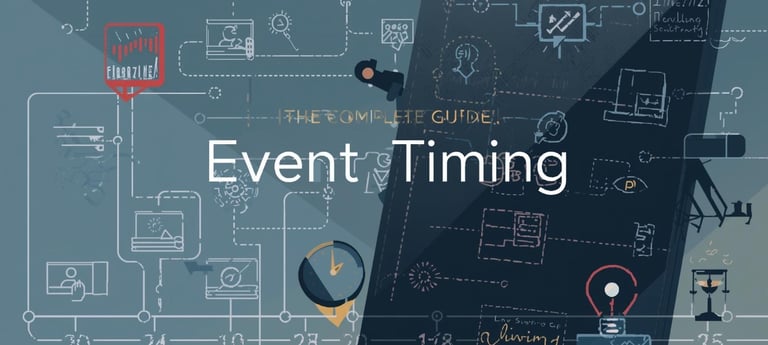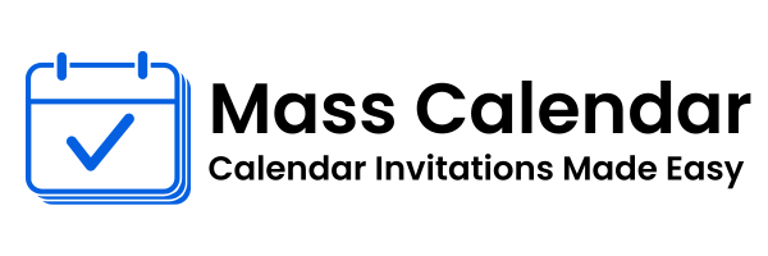The Complete Guide to Event Timing: Managing Sessions, Speakers & Presentations Effectively
Events today demand precision, coordination, and professionalism. Whether you're organizing a webinar, hosting a conference, or running a corporate training session, timing shapes the entire experience. A smooth event depends heavily on time discipline and that’s where tools like a stage timer or a countdown timer for events become essential.
BLOG
11/20/20253 min read


Events today demand precision, coordination, and professionalism. Whether you're organizing a webinar, hosting a conference, or running a corporate training session, timing shapes the entire experience. A smooth event depends heavily on time discipline and that’s where tools like a stage timer or a countdown timer for events become essential.
This blog dives deep into the importance of time control in both online and offline events, discusses how different timers support presenters, and offers practical guidance for managing sessions efficiently.
Why Timing Is the Foundation of a Great Event
Every event follows a structured agenda, yet the biggest challenge organizers face is keeping everything on track. Even a small delay in one part can disrupt the entire schedule.
Timers such as a timer for presenters or a countdown timer for speakers help solve several challenges:
Prevent sessions from overrunning
Ensure fairness among speakers
Avoid audience fatigue
Keep transitions smooth
Maintain overall event quality
Whether it’s a countdown timer for stage or a countdown timer for webinar, time awareness keeps the event predictable and professional.
Understanding the Different Types of Event Timers
1. Session Timers
A countdown timer for sessions ensures each segment of the event begins and ends as planned. These timers help maintain flow across long programs with multiple speakers or activities.
2. Presentation Timers
A timer for presentation or countdown timer for presentation helps speakers pace themselves. Presenters often lose track of time while engaging their audience, so having a visible timer ensures clarity and confidence.
3. Speaker Timers
Coordinating several speakers can be tricky. A timer for speakers ensures smooth transitions, particularly during panels, workshops, or pitch rounds.
4. Webinar Timers
Virtual events rely heavily on timing. A webinar timer or a countdown timer for webinar helps reduce digital fatigue by keeping sessions crisp and engaging.
5. Stage Timers
A stage timer is vital for live events where speakers need a clear time prompt. These are often used in conferences, award shows, corporate functions, and large gatherings.
How Timers Improve Event Experience
For Organizers
Keeps everything aligned with the schedule
Makes transitions easier
Reduces stress behind the scenes
For Speakers
Helps maintain a balanced speech
Avoids rushed or extended endings
Enhances delivery quality
For Audience
Ensures punctuality
Improves engagement
Creates a professional experience
Using a consistent conference timer across the event helps everyone stay on the same page.
Real-World Scenarios Where Timers Are Crucial
1. Conferences
With multiple tracks, keynote sessions, and workshops happening simultaneously, timing is the anchor creating harmony.
A countdown timer for stage ensures speakers don’t exceed their slots.
2. Webinars
Virtual audiences drop off when sessions exceed expected time.
A countdown timer for speakers makes the event smoother and predictable.
3. Corporate Events
Product launches, internal meetings, and training sessions require structured duration management.
A timer for presenters keeps everything moving efficiently.
4. Hybrid Events
Timers synchronize both online and offline participants, preventing awkward delays or misalignment.
Best Practices to Manage Event Timing Smoothly
1. Brief Speakers in Advance
Clear communication about time limits prevents confusion.
2. Keep Timers Easy to See
Whether it's a large stage timer or a small rehearsal clock, visibility matters.
3. Use Color or Visual Signals
Green for start, yellow for warning, red for stop speakers follow these easily.
4. Include Q&A Timers
A separate countdown timer for presentation or interaction section helps maintain pacing.
5. Always Add Buffers
Unexpected delays happen small buffers avoid schedule piling.
Common Timing Challenges & How to Handle Them
1. Presenters Losing Track of Time
Solution: Place a visible timer for presentation within the speaker view.
2. Overlapping Sessions
Solution: Use a countdown timer for sessions to monitor transitions.
3. Virtual Lag
Solution: Start early and use a synchronized webinar timer.
4. Delayed Audience Interaction
Solution: Time box Q&A and feedback sections.
Conclusion
Good time management elevates any event from average to outstanding. Whether on stage or behind the scenes, tools like a conference timer or a timer for speakers help maintain structure, professionalism, and engagement. With events becoming more dynamic and multi-format, mastering the art of timing is no longer optional, it’s essential.
Using clear, visible time guidance ensures that speakers deliver concise, high-quality sessions, and audiences experience a seamless journey. From a countdown timer for events to a countdown timer for webinar, every timekeeping element contributes to an event that is memorable, organized, and impactful.
MassCalendar.in
Send Bulk & Mass Calendar Invites Instantly
CONTACT
Meetings
+44 (0) 203 916 5117
© 2025. All rights reserved.
Help?
